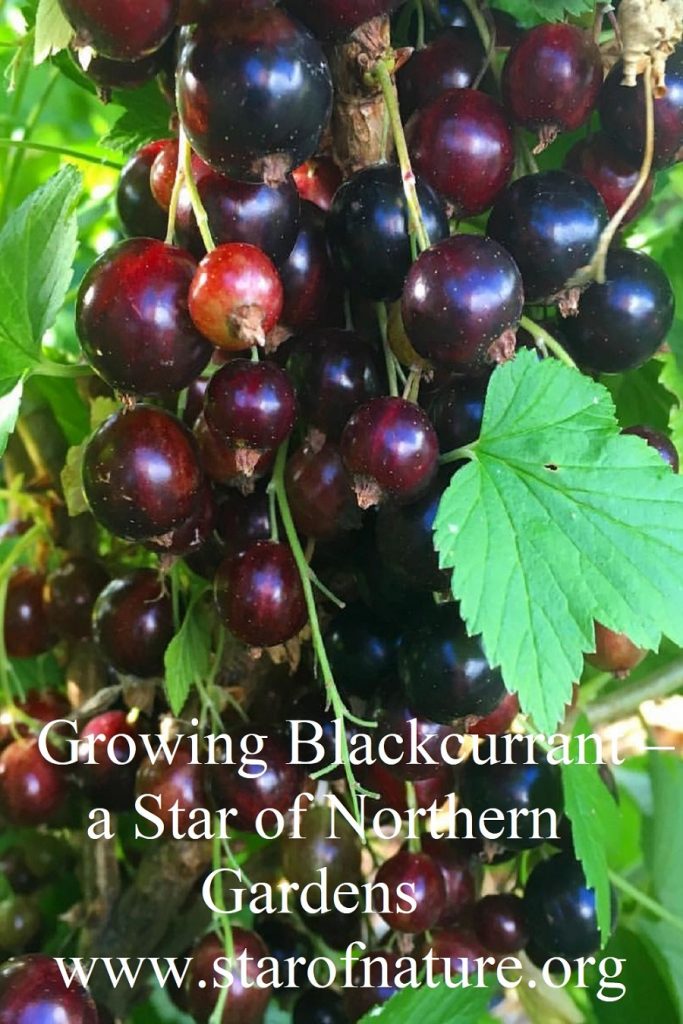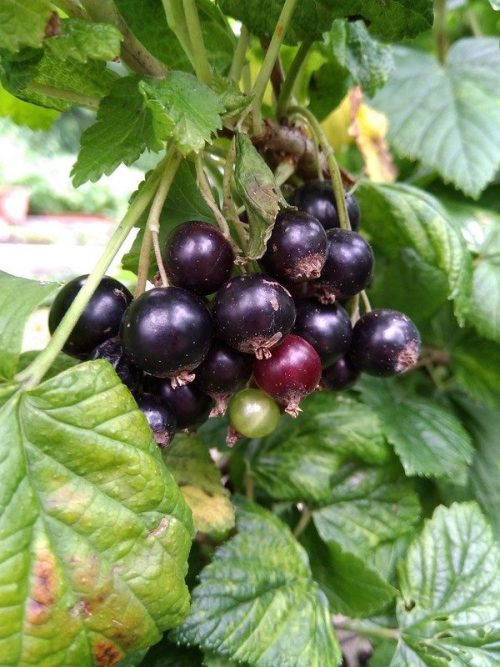Growing Blackcurrant – a Star of Northern Gardens
Blackcurrant (Ribes nigrum) is a native of northern Europe and northern Asia (Siberia) where it still grows as a wild woodland shrub. It has been cultivated in Europe since the Middle Ages, first as a medicinal plant and later also as fruit. It is a beautiful and versatile shrub that has many uses in cooking, cosmetics and medicine. Growing blackcurrant is easy and enjoyable. In fact it is a perfect plant for a small garden.
The benefits of blackcurrants
Blackcurrant berries
Blackcurrant berries are valued for their extremely high vitamin and mineral content. They are one of the best natural sources of vitamin C. Since vitamin C strengthens immunity, blackcurrant berries and juice are used in the treatment of colds. In herbal medicine blackcurrant berries have many different used, including the treating anemia.
Blackcurrant leaves
The leaves of blackcurrants have a lovely, strong and evocative smell. Interestingly, blackcurrants differ in this respect from the closely related species, red and white currants. The leaves of red and white currants have hardly any smell at all.
Because of their attractive smell blackcurrant leaves are used as spice in preserves, for example, in pickled cucumbers and tomatoes. They are also used to make tea and aromatic bath essences, both due to their smell and to their high vitamin content. Blackcurrant leaves contain about 30% more vitamin C than berries.
Blackcurrant flowers
Currants flower very early in spring and their small green flowers are very rich in nectar. They provide a wonderful resource for pollinators at a time when few flowers are available. Currants thus attract pollinators to the garden, ensuring that they will be present when fruit and vegetables flower and need their help.
***Read more about nectar and its use by bees and other insects: What is Nectar: Basics for a Bee-Lover
***And here is a list of plants, including currants, ranked by nectar production: What are the Best Nectar-Producing Flowers for Bees?
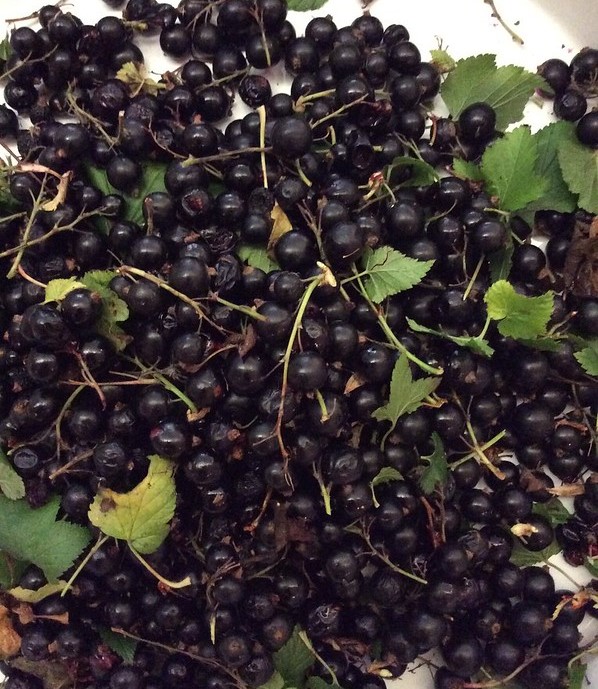
On the photo above is a blackcurrant ‘Ben Lomond’, a modern Scottish variety. It is compact, strong and upright, and ideal for a small garden. It is a favourite of amateur fruit growers.
How to grow blackcurrants?
Blackcurrants are compact bushes that take little space. They also do not require full sun and will flower and produce berries well in partial shade. All this makes them excellent fruit for a small garden.
Sun and shade requirements
As a woodland plant, blackcurrant grows best if given some shade. In this respect it differs from red and white currant that need an open sunny position. Blackcurrant will grow in full sun as long as it gets enough moisture. Deep shade, however, should be avoided – without any direct sunlight very few berries will be produced.
Soil requirements
Blackcurrants prefer soil that is slightly alkaline, rich, heavy and moist, but not waterlogged. The soil should not be acidic.
Blackcurrants grow well in low lying areas. In dry, hot conditions berries will be small, and will dry out and drop easily.
Fertilizers and soil improvement
Blackcurrants do not require regular fertilization, though it is recommended to lightly dig the top layer of the soil around the plants in autumn and spread well-rotted manure or compost. Compost can then be left in place for spring and summer to provide cool moisture that blackcurrants need. This is particularly important to do if berries become smaller and the growth of bushes slows down.
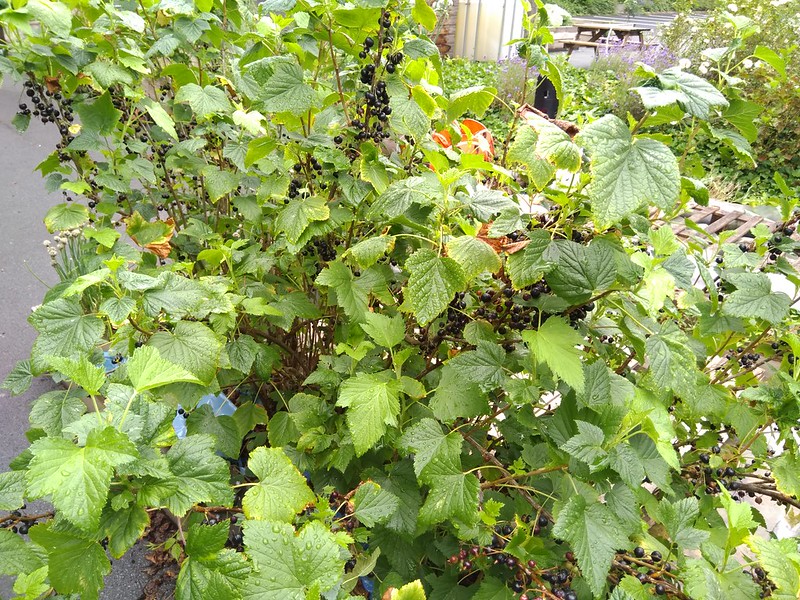
How to propagate blackcurrants?
Planting blackcurrant cuttings
Blackcurrants are very easy to propagate by cuttings. All you need to do is to cut a shoot that developed the previous summer and is a year old. It should be about 20 cm long. Cut it in spring, before the leaves open.
Plant the shoot vertically in a bed with loose humus-rich soil. To do this, make a hole with a stick or a pencil and insert the cutting, leaving two buds above the surface. Firm the soil around the cutting to ensure it has a good contact with soil, and water it well. Ideally also put some well-rotted manure around the cutting.
The best position for a cutting is in half shade – both full sun and full shade will slow down its development.
Looking after the cuttings
Water the cuttings twice a week in dry weather. In good conditions both buds will produce shoots that can grow up to 50 cm in one summer. In autumn the cutting can be moved to a permanent location, if required.
If the cutting developed a single shoot, prune it in autumn to four buds. If it developed two shoots, prune each to two buds. This will help the cutting to develop new branches next spring.
Blackcurrant bushes grow to about 1.5-2 m tall and should spaced at 1.5 m.
How to use blackcurrants?
Blackcurrant preserve
In the UK blackcurrants are best known as an essential ingredient in the ‘summer pudding’. They have, however, many other uses, such as in making jams and preserves.
To make a preserve:
- Liquidize blackcurrant berries.
- Add an equal amount of sugar.
- Heat, constantly stirring, until sugar is fully dissolved.
- Put, while still hot, in sterilized jars and close with airtight lids.
Because the currants have not been fully cooked, the jars need to be kept in a fridge. The advantage of this method is that the berries keep their taste, smell and vitamin content better than with other recipes, requiring longer cooking. The mixture can be used in the same way as jam, on ice-cream, cakes, scones and toast, and to flavour cold and hot drinks.
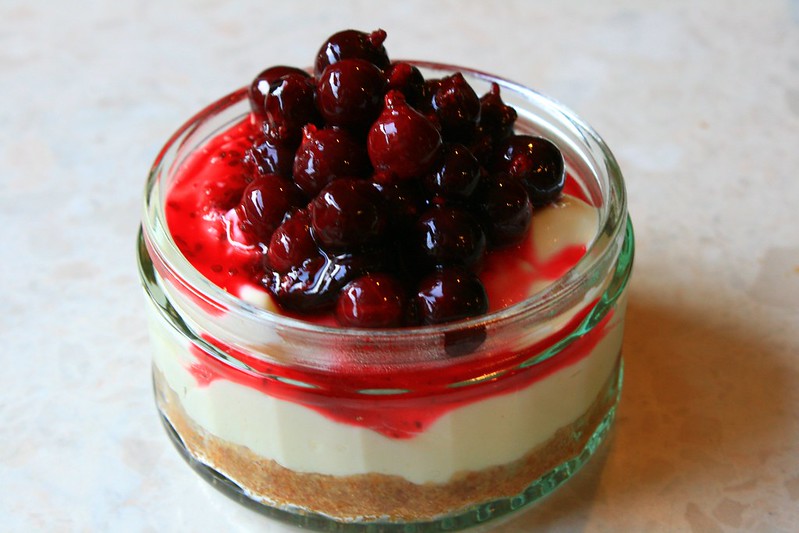
Blackcurrant tea
In spring collect some leaves, as they start opening, and brew in the same way as tea in a cup or a pot. This makes a wonderful aromatic tea believed to be beneficial for skin disorders.
Blackcurrant juice
Blackcurrant juice sweetened with sugar or honey – two teaspoons to half a glass of juice – is an excellent source of vitamin C. It is delicious diluted with water.
It is also taken as a natural remedy against colds and cough, and particularly against the loss of voice following a cold. The recommended amount is two tablespoons three times a day.
Image credits: featured image by Dark Dwarf; blackcurrant ‘Ben Lomond’ by John Lord; blackcurrant in a garden by Dark Dwarf; blackcurrant cheesecake by Eldriva; pin image by Mark Bradshaw.
Posts related to ‘Growing Blackcurrant – a Star of Northern Gardens’
Raspberry: a Perfect Fruit for Any Garden?
45 Edible Flowers for Baking, Cakes, Cocktails, Salads and More
Rosehip Tea: Benefits and Recipes
Wild Salad: Why should we Eat Foraged Greens?
Pin ‘Growing Blackcurrant – a Star of Northern Gardens’ for later
